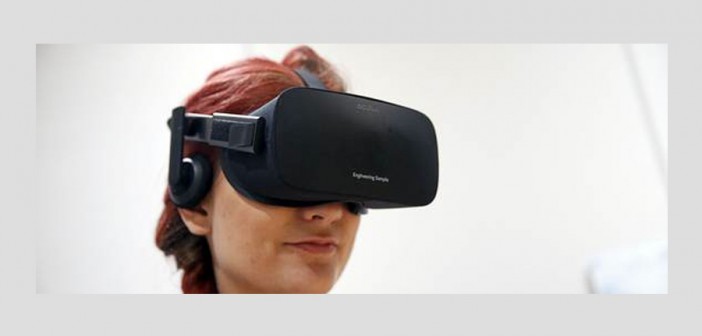Can Virtual Reality Become a Mass Marketing Play?
For a marketer, virtual reality technology can bring consumers to faraway places, add an immersive element to a product demonstration or bring a new experience to life.
While such virtual reality campaigns can offer visually stunning experiences – Gatorade and Ocean Spray are among the brands that have recently incorporated the technology — for the most part they have limited audience reach.
“It’s so far from scale is the real reality,” said Deutsch North American Chief Digital Officer Winston Binch. “For the optimal experience you need an extra piece of hardware… and that’s a pretty big barrier.”
Virtual reality has gone through multiple hype cycles over the years, but the technology has elevated its profile in the last two years as big technology companies like Samsung, HTC and most notably Facebook FB +1.22% make massive investments in the space.
Facebook, which acquired virtual reality company Oculus Rift for $2 billion last year , is working on a stand-alone video app that would support 360-degree videos, people familiar with the matter told The Wall Street Journal. Though development of the app is still in early stages, the Journal reported, the app could help extend Facebook’s presence in virtual reality beyond the headset and bring the technology to a wider audience.
Facebook’s move could also propel increased adoption of virtual reality for marketers.
“Some [clients]are waiting for a bit more of a broad audience to reach through 360 video or other virtual reality experiences,” said Adrian Slobin, managing director and digital strategist at SapientNitro, a digital agency.
Most of SapientNitro’s clients that have a significant consumer-facing presence are in experimental stages with virtual reality, but none have gone all in on VR quite yet, Mr. Slobin said. Right now, “the play is really to create a wow factor,” when it comes to doing something with virtual reality as opposed to racking up impressions, he added.
Agencies also face production hurdles when it comes to creating virtual reality campaigns. SapientNitro, for example, is investing in the equipment, software and talent to shoot, produce and edit 360-degree video.
“The real barrier is creating an immersive, worthwhile experience that doesn’t get people sick and is produced well,” Mr. Slobin said. “Stitching together video is no easy task.”
A mobile video app for 360-degree, or “spherical” videos, however, would give consumers a taste of the virtual reality experience that a headset would provide. Such videos compile footage from multiple cameras and allow viewers to watch the video from multiple angles. Facebook CEO Mark Zuckerberg has said that the social network would support video in its news feed. Google’s YouTube has also enabled advertisers to use 360-degree ads, a format the video giant says will help better engage mobile users.
“What that spherical capability really allows for is a more immersive, emotive experience around a piece of content,” Mr. Binch said. “That’s going to be something that scales faster than deep virtual reality.”
To date, virtual reality has been used as more of a one-off kind of marketing play and few brands have yet to invest heavily in the technology for a big campaign. Few people have access to their own virtual reality technology and Facebook’s Oculus Rift headset, along with other similar technology, won’t be available for consumers until next year.
“There isn’t a lot of [client]demand for virtual reality right now because consumers don’t have the headset yet,” said RPA’s senior vice president of growth and innovation Tim Leake. “Virtual reality is built to be a storytelling and experience medium, that’s what’s really exciting about it.”




